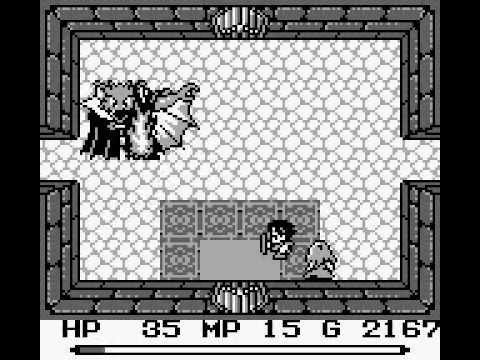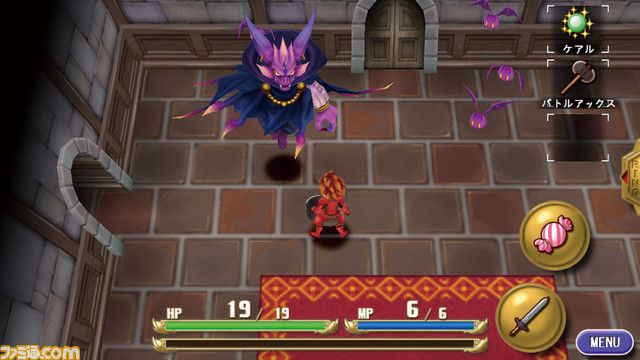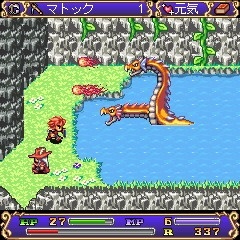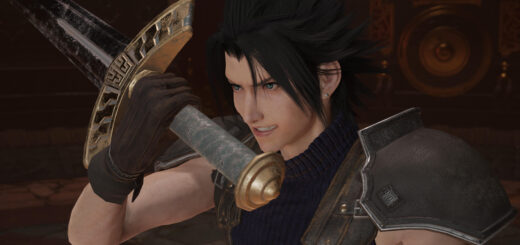Looking Back at the Final Fantasy Adventure
Way back in the day, Final Fantasy Adventure was one of a handful of decent Game Boy games available for rent at my local Phar-Mor. I lost track of how many times I borrowed it with rental coupons, but as soon as I had my own funds to spend, I got a copy of my own. Over the years, I eventually played three different versions of the game in two different languages. And just this year, I got a copy of the Collection of Mana for Switch, three weeks before I actually bought a Switch (thanks, Wheels!). It’s a bit late to be writing a review for this, and given my three decades of experience with it I’m not sure I’d be able to do so objectively. So instead, I shall aim to do an editorial instead.
Because really, we had six different reviews for this title on the old site, one of them mine. There’s little point in rehashing things for mere point scores. A better thing to do is to ask, “How could it have been better?” or “What could the developers have done differently?” And the answer is, in hindsight, quite a bit.
In the specific case of the Collection of Mana, there’s the graphics. While it makes sense that the original Game Boy monochrome version be included, it’s also somewhat of a shame that there was no option for the improved graphics from the mobile edition of the game, the one that I reviewed several years ago. That version had SNES-level spritework that took nothing away from the charm of the original but added much in terms of appearance. An option for the graphics and user interface from the iOS remaster would have been even nicer.
But that’s a minor complaint. There are deeper elements of the game to discuss.
With hindsight and the experience of decades behind me, it seems obvious that Final Fantasy Adventure was meant to reflect some of the style of the Zelda series superimposed over the aesthetics of a Final Fantasy title. There’s the wide map, the early action RPG mechanics, and most importantly the elements of puzzle-solving using the various weapons and spells the game provides. Using the chain-scythe to clear away brush, the axe to chop down trees, or the whip to traverse distances — these were all new and interesting tricks to my ten-year-old self, and even in my most recent time through in January, they made for an entertaining experience.
However, I can also say that the game never went as far with it as it could have. Especially on the magic side of things, there was plenty of lost opportunity. The eight spells of Final Fantasy Adventure are of variable utility, with some seeing far more use than others. Cure and Heal are the obvious contenders for usefulness, and Fire takes care of those pesky undead before one has the silver sword — or if one accidentally sells that sword in Jadd like an idiot, again.
But then there are Sleep and Mute, the two debilitating spells that are theoretically useful, but only if the player remembers that they exist at a juncture when they can actually be used. The Lightning spell at least does damage, but it’s a straight-line attack that seems trivial for enemies to dodge just through random movements. And as for Flare / Nuke, it has the same aiming issue as Lightning, with the minor saving grace of also being a plot token needed to access an important level.
The standout spell for the game, however, is Ice. Not because it does much damage; it’s a save-or-suck insta-kill. Rather, it has two interesting things going in its favor. First, it changes the target into a harmless snowman, which can then be pushed around the screen to activate pressure plates. Second, it can be piloted using the directional buttons to go around obstacles, and in a few specific rooms of certain dungeons it’s even necessary to thread a miniature maze with a frigid missile in order to hit the target, activate the switch, and proceed.
In short, Ice is a spell designed for puzzle-solving, and it does so quite handily. We can only wonder why none of the other spells were given just a little bit more utility to make their use worthwhile. Perhaps give the player situations where Sleep or Mute might have an effect on the scenery? Include strange engines to raise bridges, move elevators, or work pumps — if some power is provided via a Lightning spell? Have obvious, impassable barriers scattered across the map for the player to return to, Flare / Nuke spell in hand, with rare and optional goodies behind them? The opportunities are there.
This would also help with the inventory issues the game had. In short, Final Fantasy Adventure only had a handful of necessary items: MP-restoring Ethers, a few Potions and status-healers for when the hero was in a pinch, keys, and mattocks. Everything else was optional, and even the mattocks could be safely discarded once the morning-star weapon was found. Unfortunately, this ‘everything else’ included willpower-boosting items (pointless by mid-game), treasure items, and the item equivalents of most magic spells.
All of these take up vital inventory space, which is bad enough when one is late in the game and out of keys (another major issue with the game that could have been done better). Spell items are rarely even available before their spells, and that also seems like a missed opportunity to have had some memorable puzzles in early levels.
Let it not be said that Final Fantasy Adventure isn’t a good game, because it is. But it could have been an even better game, a great game, an amazing and groundbreaking game through further application of the creativity and design genius that we already see in the product as it is. This is all easy to say in hindsight, but it’s something we can all carry forward. Perhaps this line of thought might inspire us to do even better.












Recent Comments